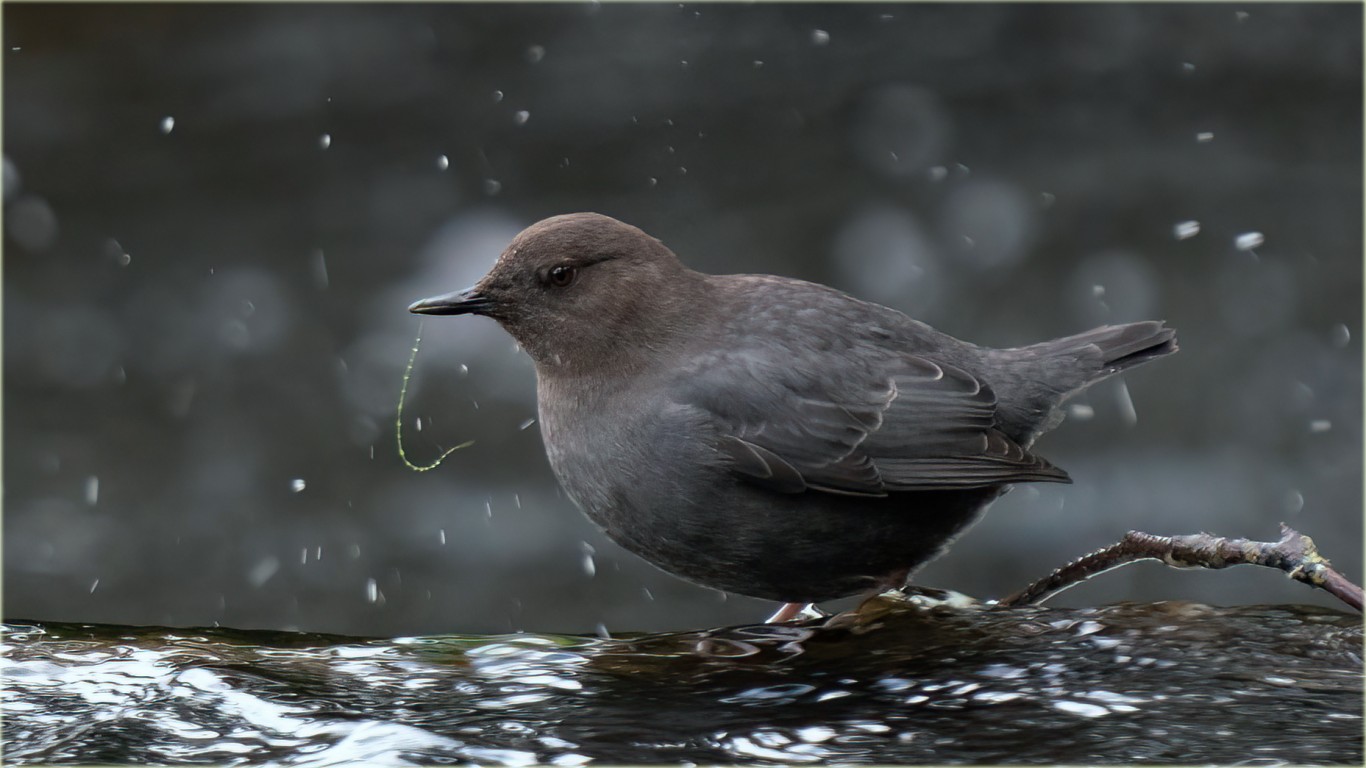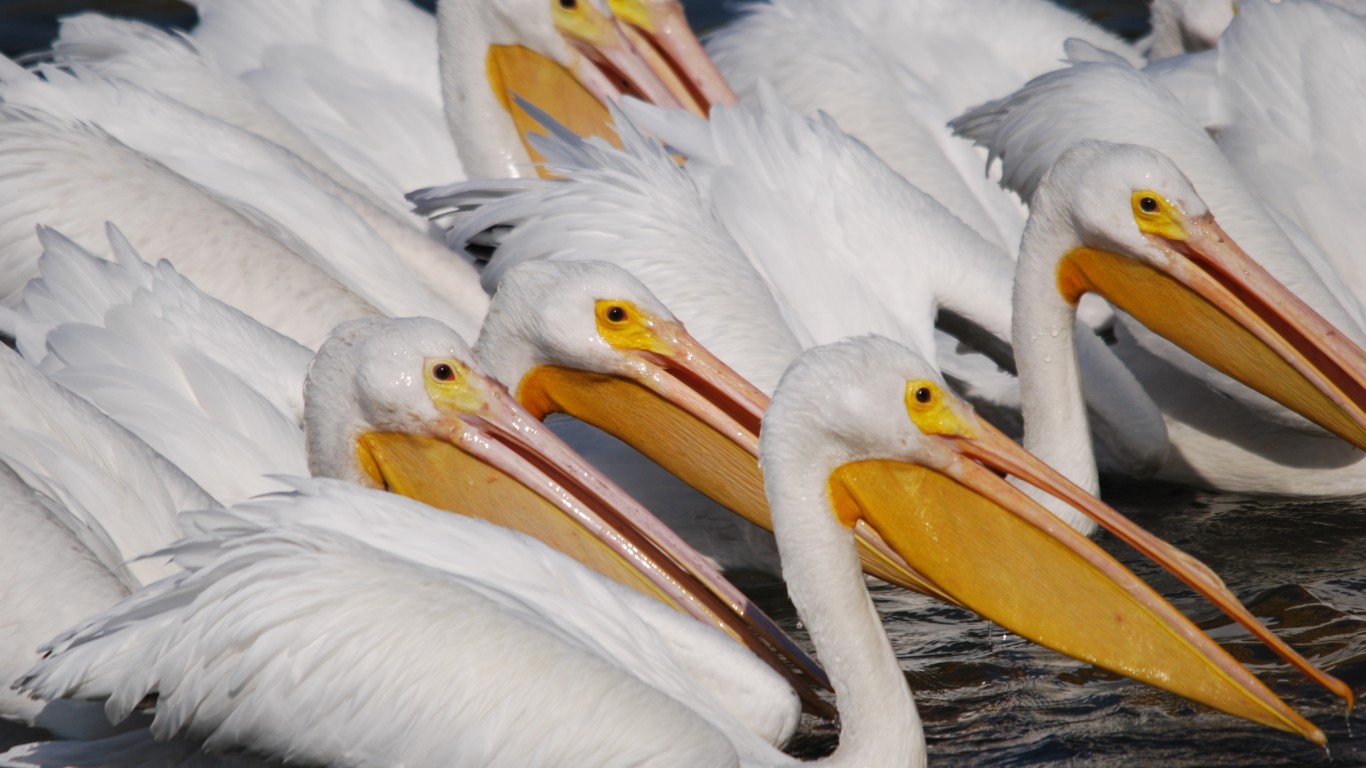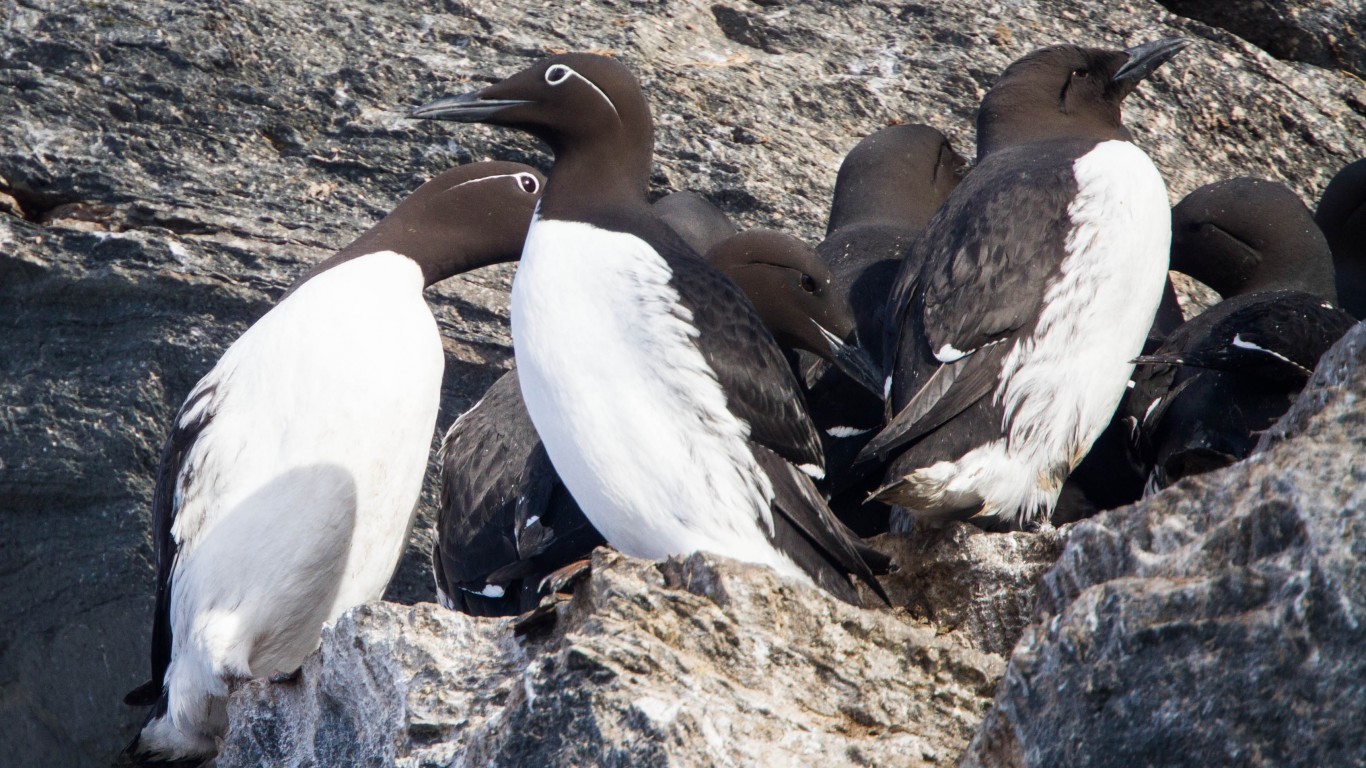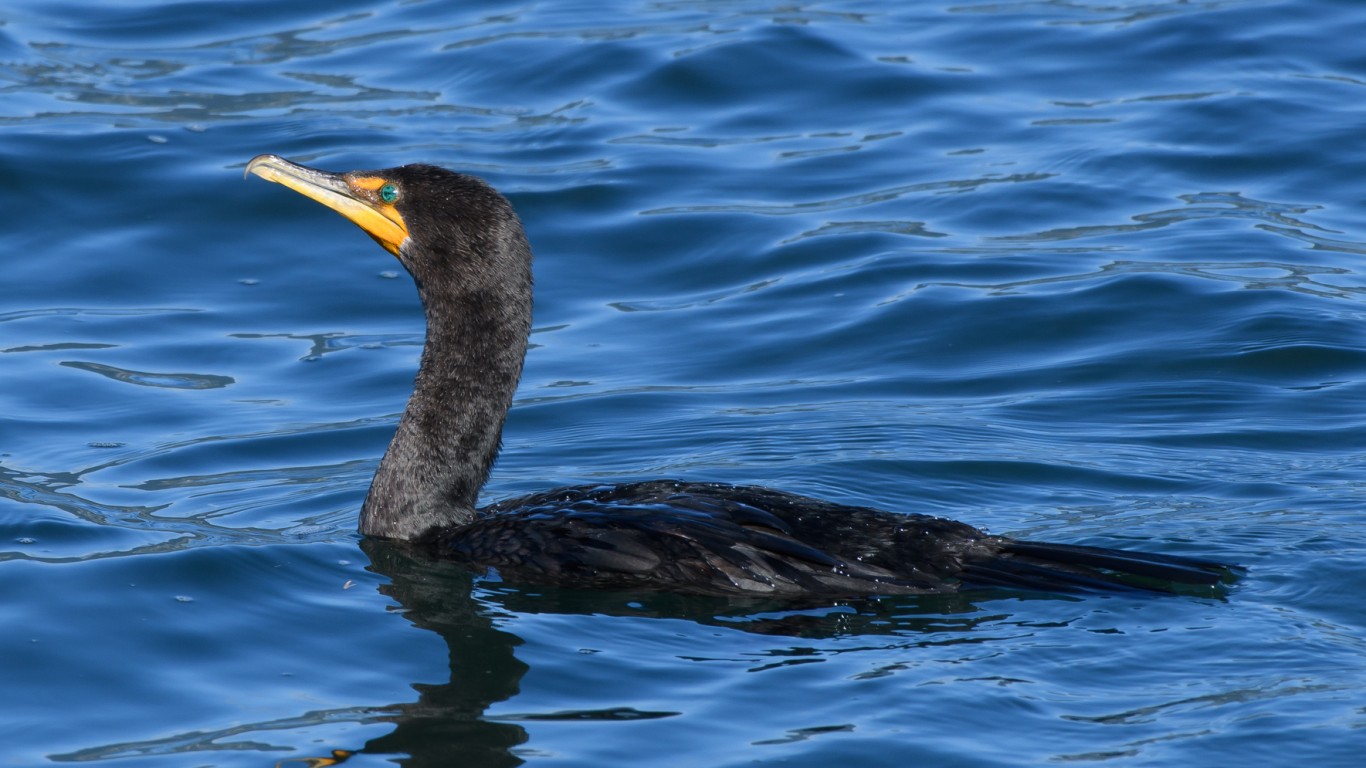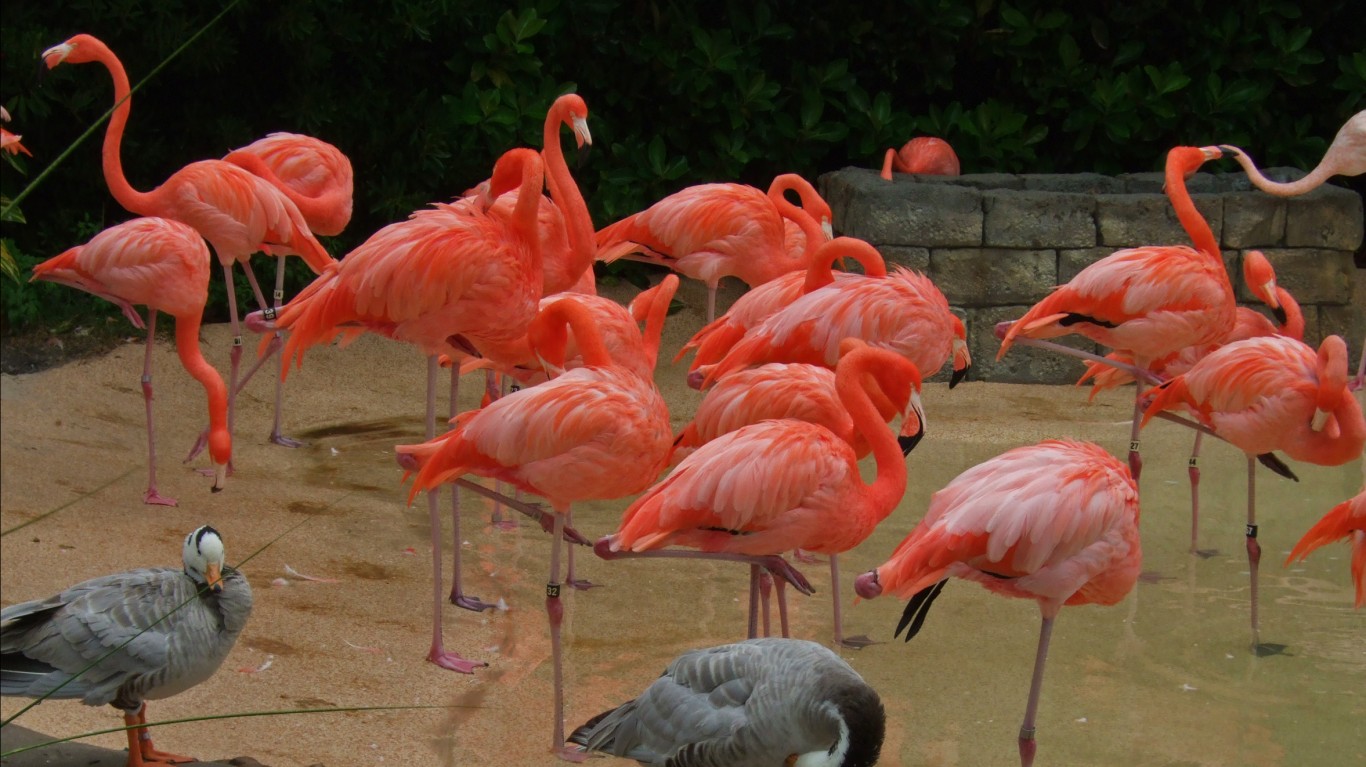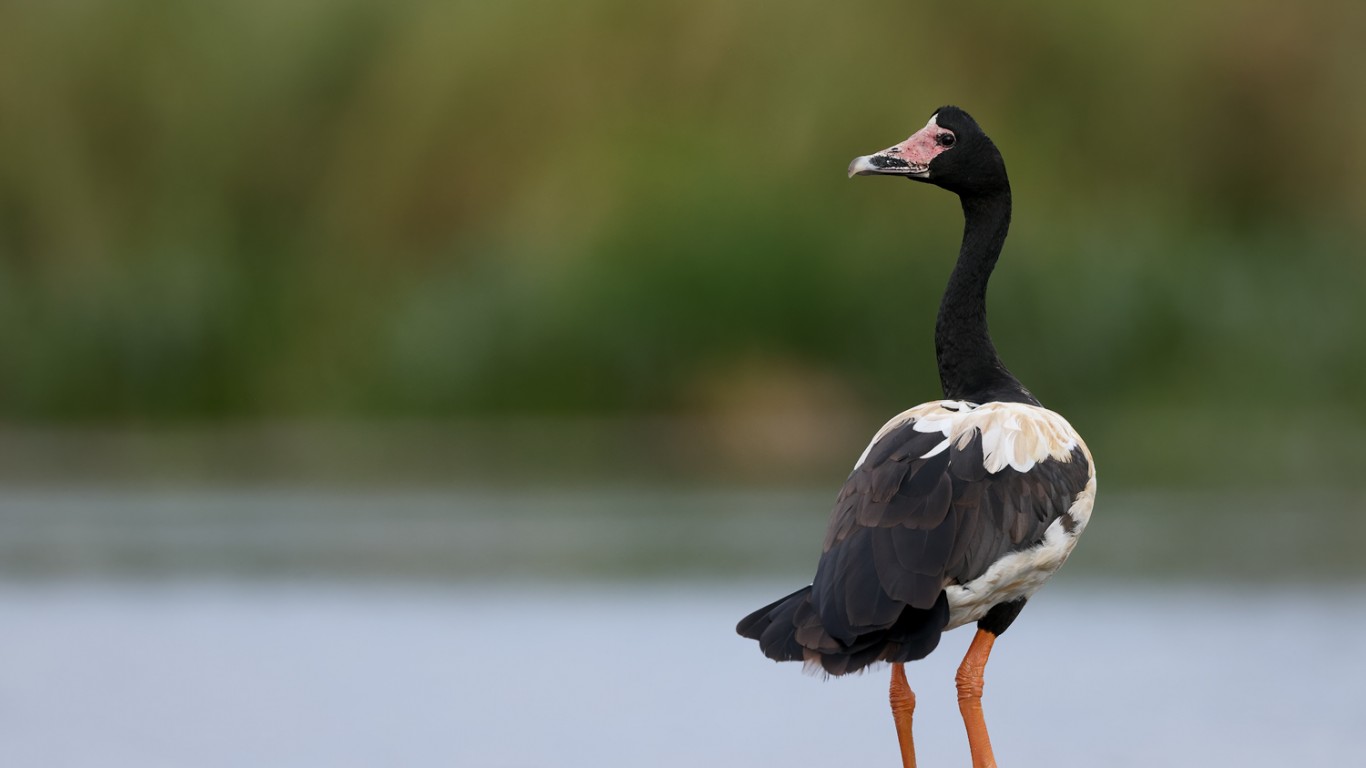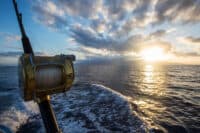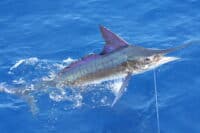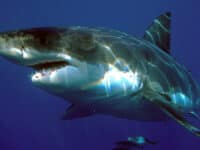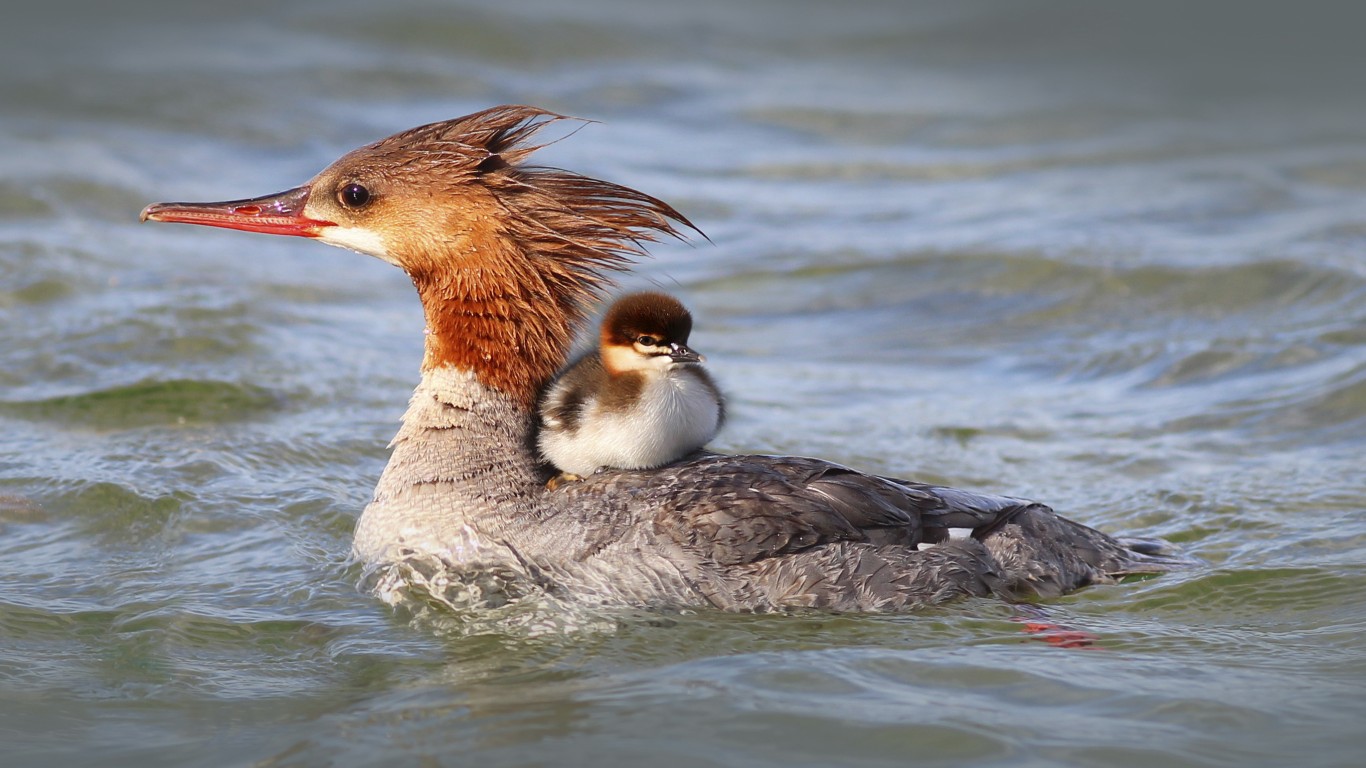
The animal kingdom is full of creatures that can do wild things. Owls, for example, can turn their heads 270 degrees. African lungfish can survive a year out of water, while dung beetles can push masses that are 200 times their weight, and jellyfish are basically immortal. (This is the longest-living animal in the world.)
And some animals – both birds and water creatures – have the ability to both swim and fly. To assemble a list of these animals, 24/7 Tempo consulted sites including Audubon, the National Wildlife Federation, and the Cornell Lab of Ornithology. In the case of animals such as ducks and geese, we grouped together various subgroups of the species into one category.
The majority of animals that have mastered flight and swimming are birds that eat fish or other marine life. Some are seabirds that can dive 200 feet under the water and spend most of their lives far from land. A few are marine animals that are able to breach the surface and travel through the air for yards at a time.
Click here to see 26 animals that can both swim and fly
Some birds, like the blue-footed booby and the Caspian tern, are known for rising to great heights before turning and plunging dramatically into the water at speeds as high as 67 miles per hour in order to catch their prey – faster than most of the fastest animals in the world.
American dipper
> Found in: Western U.S. and Canada
This little gray songbird, also known as the water ouzel, lives in mountainous areas, where it walks in rocky brooks and streams, disappearing underwater to feed on aquatic insects and their larvae.
[in-text-ad]
Pelican
> Found in: Pockets of coastal areas worldwide
A genus of large waterbird, pelicans comprise eight species. The American white pelican is one of the largest birds in North America, with a wingspan of up to ten feet. Pelicans often cooperate when feeding, corralling fish into shallow water, then scooping them into their pouched bills.

Anhinga
> Found in: Gulf Coast, South America
Also called a snakebird, water turkey, or American darter, the anhinga swims underwater with its long, dark neck and head raised up, giving the appearance of a snake about to strike. It spears fish with its sharp bill.

Puffin
> Found in: North Atlantic and North Pacific
These stocky seabirds spend months at a time far from land, bobbing in the ocean, diving up to 200 feet to find food, and sleeping afloat on the surface. When in flight, their small wings beat 400 times a minute to keep them aloft.
[in-text-ad-2]

Goldeneye
> Found in: North America and Eurasia
These sea ducks with bulbous heads comprise three species. The Barrow’s goldeneye spends winters in coastal estuaries and inland lakes that don’t freeze over, diving underwater in search of crustaceans, mussels, aquatic insects, and vegetation.

Booby
> Found in: Tropical and subtropical waters and coasts
Avid shoal fishers, the six species of boobies are known for their majestic dives into the ocean from high in the air. Blue-footed boobies often hunt in flocks, feeding on large schools of fish, and are capable of diving to depths of 80 feet.
[in-text-ad]

Tern
> Found in: Large lakes and coastal areas worldwide
With their sharp bills, terns feed on fish and occasionally on insects in lakes and oceans throughout the world. Some species, such as the Caspian tern, are known to rise to great heights in the air before plunging into the water.
Common murre
A type of auk, the common murre spends most of its time at sea and rarely comes to land except to nest. Murres can fly up to 50 mph and regularly swim up to 100 feet below the surface to catch fish.

Coot
> Found in: Worldwide
Often mistaken for ducks, coots are a genus of birds common in open waters throughout North and South America, Northern Africa, Asia, Europe, and Australia. They feed mainly on algae and other aquatic vegetation, but are also known to eat molluscs and insects.
[in-text-ad-2]
Cormorant
> Found in: Coastal areas and inland lakes worldwide
Cormorants are a family of seven genera (and around 40 species) of web-footed aquatic birds. They feed on fish, eels, and water snakes, often diving from the surface of the water to the seafloor to catch bottom-feeders.
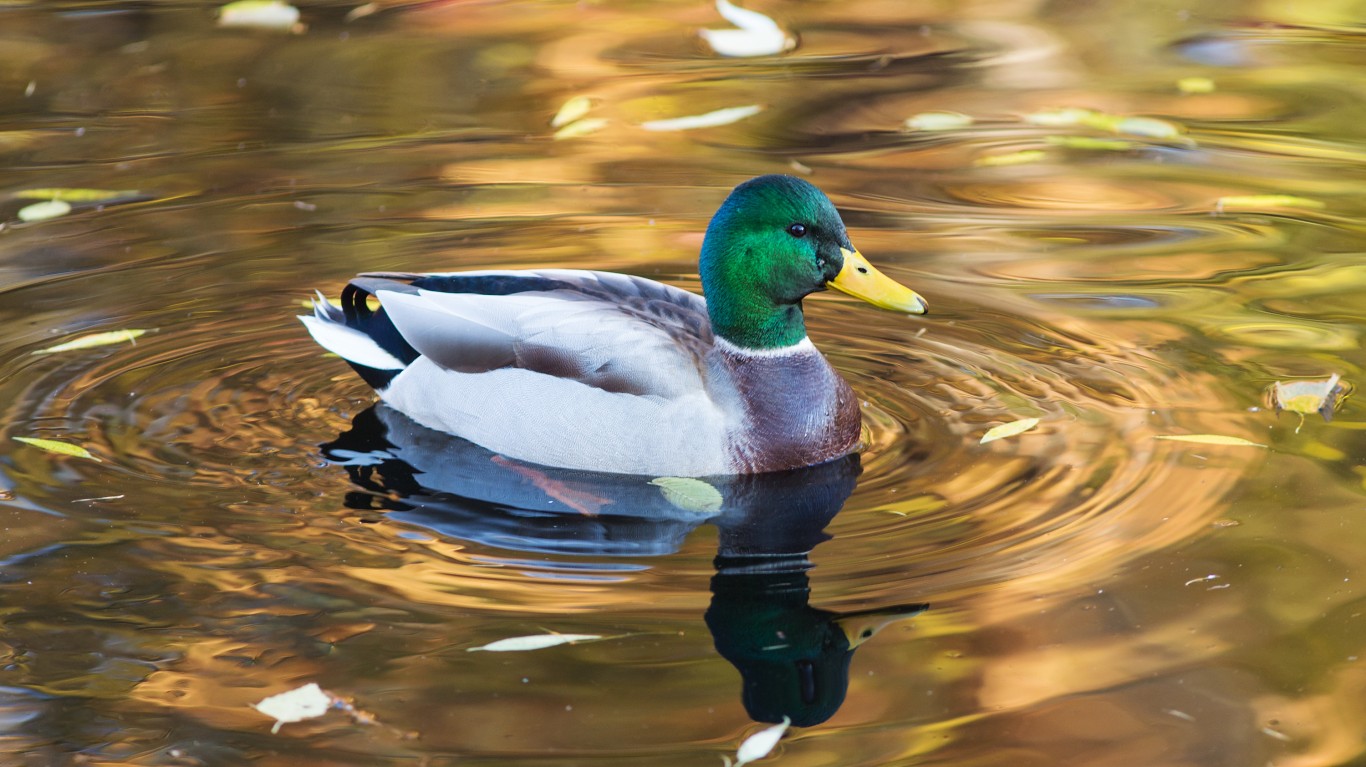
Duck
> Found in: Worldwide
Ducks are a waterfowl that share the family Anatidae with geese and swans. They eat a variety of grasses, aquatic plants, fish, molluscs, insects, and worms. Some are surface feeders who bob on the water and tip their heads under, while some dive deeper and forage underwater.
[in-text-ad]
Flamingo
> Found in: Caribbean, South America, Africa, Southern Europe, Southwest Asia
There are six species of flamingos around the world, all of which are omnivores. They filter mud and feed on algae, brine shrimp, insects, molluscs, and crustaceans. Although they usually wade in water to feed, they can also swim in deeper waters while foraging.

Flying fish
> Found in: Oceans worldwide
A family of flying fish that consists of 64 species, Exocoetidae are known for taking multiple consecutive flights from the water, and are capable of traveling over 1,000 feet at a time. Their extended pectoral and pelvic fins help them breach the water, which they do to escape predators.
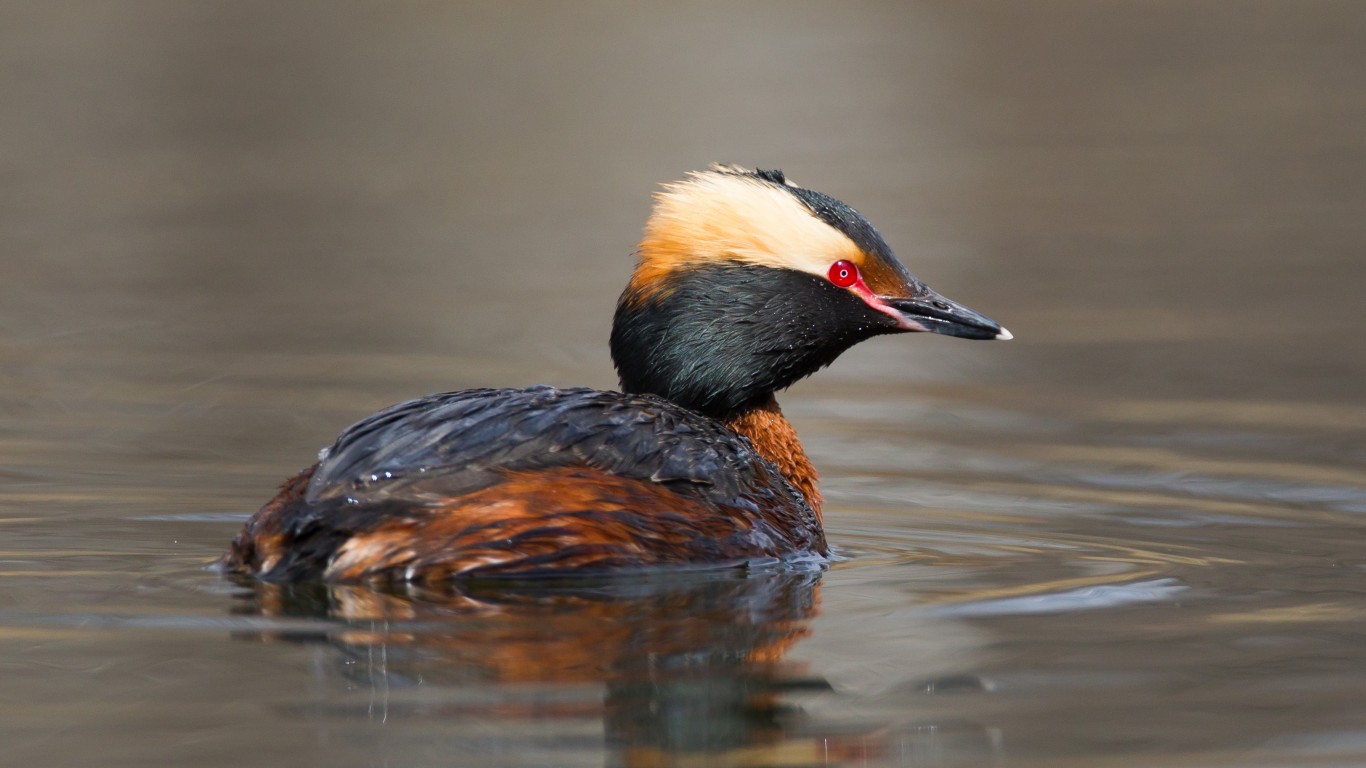
Grebe
> Found in: Worldwide
Waterbirds most commonly found in freshwater lakes and marshes, grebes resemble loons, coots, and ducks. Although a few flightless species exist, most grebes can fly as well as swim. They make floating nests out of vegetation, and the young are able to swim as soon as they hatch.
[in-text-ad-2]
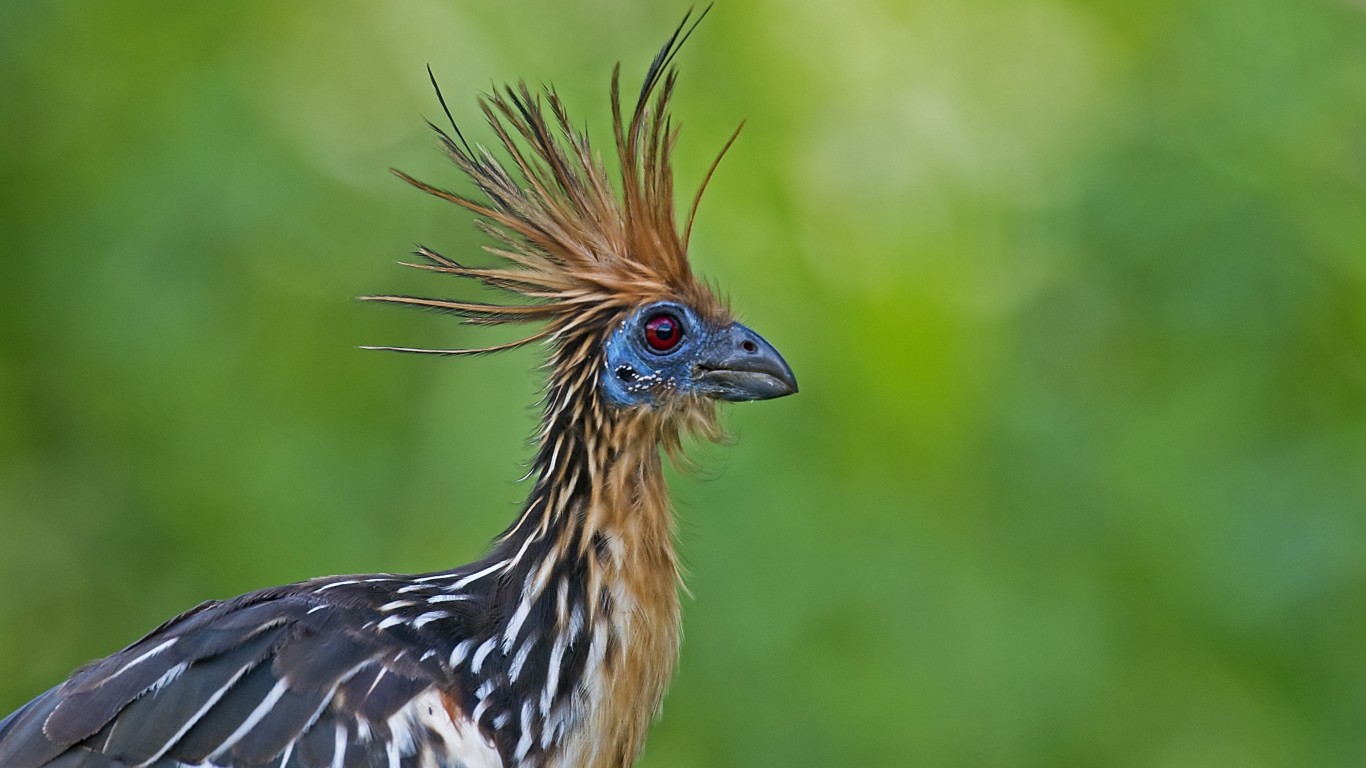
Hoatzin
> Found in: The Amazon and the Orinoco basins in South America
These pheasant-sized birds with blue faces, maroon eyes, and striking plumage are not terribly good at flying, but are capable of soaring out of trees. They are excellent swimmers, however, and tend to live near rivers and marshes, feasting on leaves, berries, and flowers.
Japanese flying squid
> Found in: Northern Pacific Ocean off the coast of Japan, Russia, China, Alaska
These squids tend to live near the surface of the water and can be seen flying distances of 100 feet in order to escape predators or to save energy as they migrate. To propel themselves above the surface, they shoot out a jet of water and sometimes flap their tentacles as they soar.
[in-text-ad]

Eider
> Found in: Northern Arctic coastal areas
Large arctic sea ducks, eiders nest in frozen tundras and spend winters in arctic and subarctic seas, eating shellfish and foraging up to 80 feet under the surface. They have been known to migrate in huge flocks of over 100,000 birds.
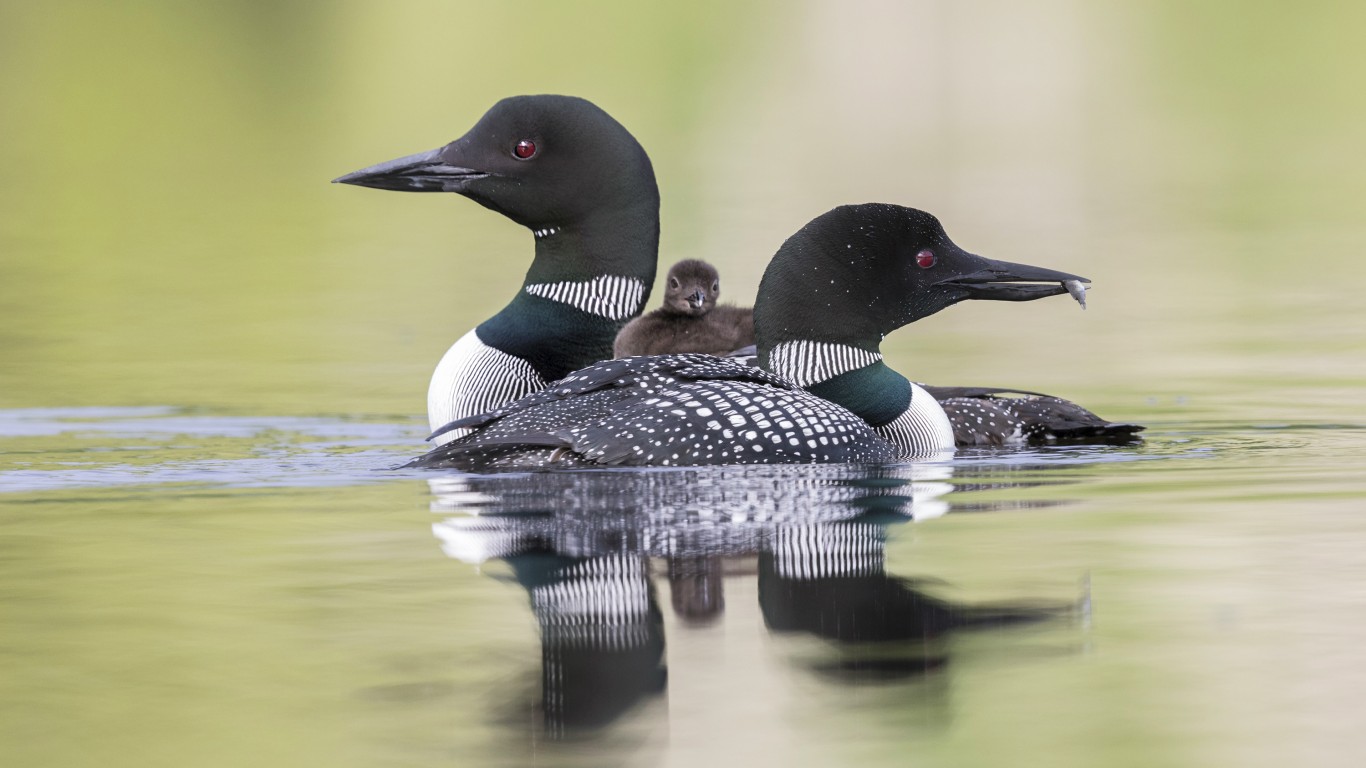
Loon
> Found in: North America and northern Eurasia
There are five species of loons, also known as divers, in the northern hemisphere. They are excellent swimmers with webbed feet, and only come to land to mate or nest. They eat mostly fish, which they catch underwater in high speed chases.
Magpie goose
> Found in: Northern Australia and southern New Guinea
Not a true goose, the magpie goose is the sole member of the waterbird family Anseranatidae, found mainly in northern Australia and southern New Guinea. With much longer legs than geese, magpie geese wade through wetlands and feed on vegetation.
[in-text-ad-2]

Merganser
> Found in: Northern hemisphere, South America, East Asia
There are four species of merganser, two which are common in the northern hemisphere, and two which are endangered and inhabit small ranges in Brazil and East Asia. Although they are considered sea ducks, they prefer river habitats, where they feed mainly near the surface of the water.

Mobula ray
> Found in: Worldwide in tropical and subtropical seas
This genus of rays is found across the oceans in tropical waters. They are known as flying rays for their ability to soar out of the water. Often jumping in groups, the rays are known to take six-foot leaps through the air for hours at a time, although scientists haven’t figured out a definitive reason for this behavior.
[in-text-ad]
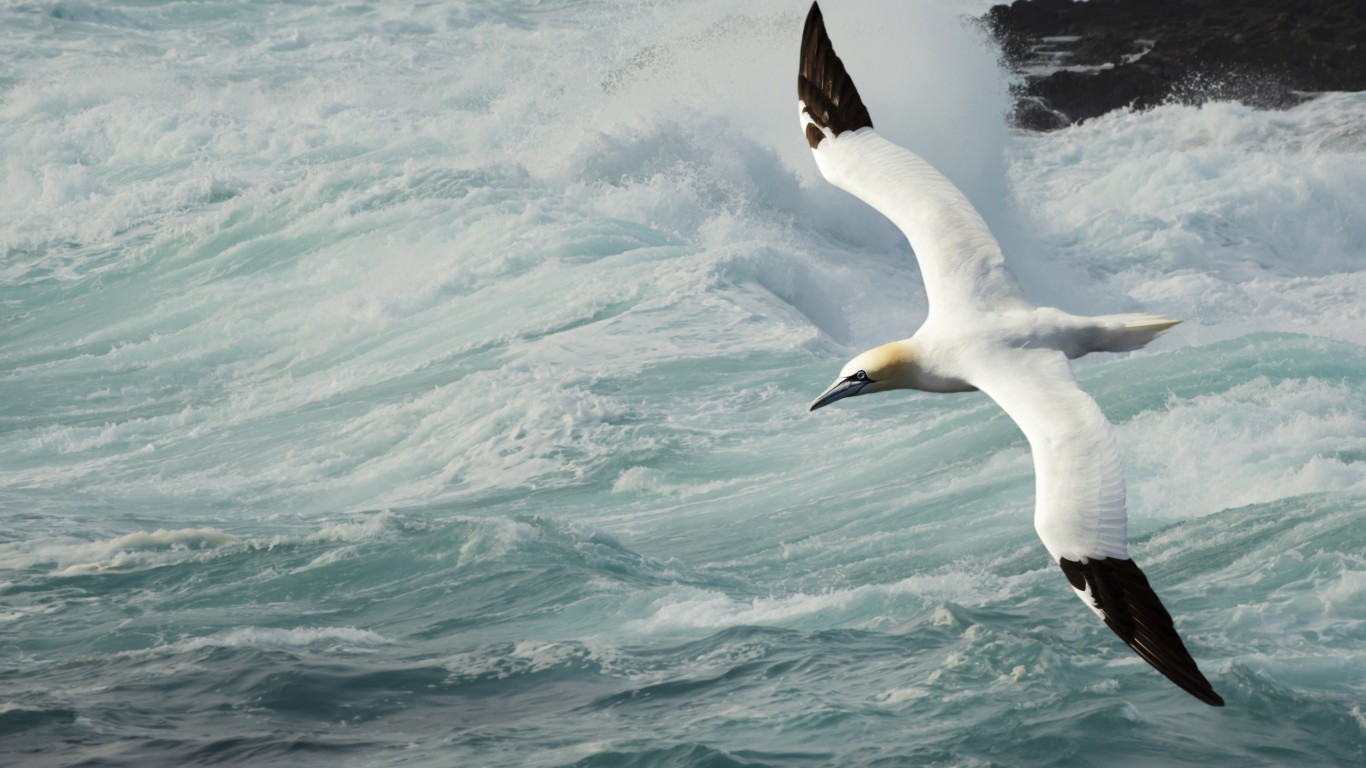
Gannet
> Found in: North Atlantic, southern Africa, Australia and New Zealand
Closely related to boobies, gannets are a genus of large seabird with three species, the most common being the northern gannet, which is endemic to North Atlantic coasts. Gannets are known to plunge into the water at high speeds to catch fish, which they swallow underwater before resurfacing.
Gull
> Found in: Worldwide
Related to terns, gulls are a group of 54 species of seabirds that live in coastal areas worldwide. They are adaptable eaters who often consume fish, crustaceans, insects, amphibians, and many other available sources from the air, land, and sea.
Razorbill
> Found in: North Atlantic
The closest living relative of the extinct great auk, the razorbill is a seabird that inhabits subarctic waters in the Atlantic. Only coming to land to breed, razorbills spend the majority of their lives on the water, where they dive deep to catch schooling fish.
[in-text-ad-2]

Stork
> Found in: South America, Africa, Eurasia, Southern U.S.
A family of long-necked, long-legged wading birds, storks comprise 19 species that are most common in the tropics. Majestic in flight, storks can have huge wingspans; they are not very good swimmers due to their minimal toe webbing, but have been known to swim on occasion.

Swan
> Found in: Northern Hemisphere, Australia, South America
There are six species of swans, large white waterfowl that are found in temperate areas. They forage both on land and in the water, where they generally submerge only their bill, or sometimes their whole forebody.
It’s Your Money, Your Future—Own It (sponsor)
Retirement can be daunting, but it doesn’t need to be.
Imagine having an expert in your corner to help you with your financial goals. Someone to help you determine if you’re ahead, behind, or right on track. With SmartAsset, that’s not just a dream—it’s reality. This free tool connects you with pre-screened financial advisors who work in your best interests. It’s quick, it’s easy, so take the leap today and start planning smarter!
Don’t waste another minute; get started right here and help your retirement dreams become a retirement reality.
Thank you for reading! Have some feedback for us?
Contact the 24/7 Wall St. editorial team.
